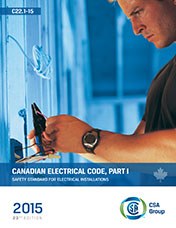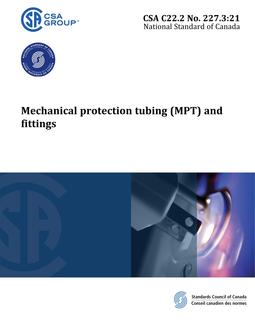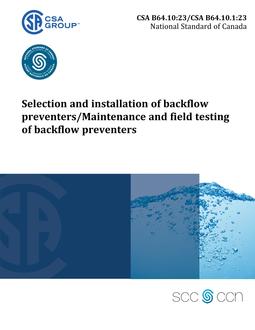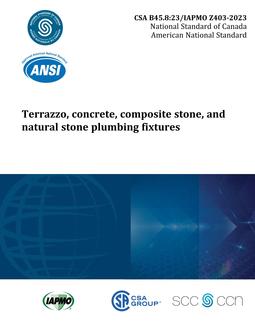
Click here to purchase
Preface
This twenty-third edition of the Canadian Electrical Code, Part I, was approved by the Committee on the Canadian Electrical Code, Part I, and by the Regulatory Authority Committee at their June 2014 meetings in Charlottetown, Prince Edward Island. This twenty-third edition supersedes the previous editions, published in 2012, 2009, 2006, 2002, 1998, 1994, 1990, 1986, 1982, 1978, 1975, 1972, 1969, 1966, 1962, 1958, 1953, 1947, 1939, 1935, 1930, and 1927.
This edition features important revisions to many Sections. Section 4 now contains requirements for high-voltage cable ampacities and clarified Rules for conductor termination temperature. In addition, a new table (Table 39) simplifies residential service and feeder conductor selection. More options are provided for load and voltage drop calculations.
Bonding conductor selection has been clarified through the addition of the new Tables 16A and 16B. In addition, Section 12 contains many new and revised requirements for wiring methods, and the conduit fill tables have been expanded.
Section 18 has undergone major revisions. Requirements for Class II and Class III locations have been relocated to Appendix J, and requirements for explosive dust atmospheres based on IEC Zone 20, Zone 21, and Zone 22 have been added to Section 18.
Object
The object of this Code is to establish safety standards for the installation and maintenance of electrical equipment. In its preparation, consideration has been given to the prevention of fire and shock hazards, as well as proper maintenance and operation.
The requirements in this Code address the fundamental principles of protection for safety contained in Section 131 of International Electrotechnical Commission Standard 60364-1, Low-voltage electrical installations. IEC 60364-1, Section 131, contains fundamental principles of protection for safety that encompass protection against electric shock, thermal effects, overcurrent, fault currents, and overvoltage. Therefore, compliance with the requirements of this Code and proper maintenance will ensure an essentially safe installation. Safe installations may be also achieved by alternatives to this Code, when such alternatives meet the fundamental safety principles of IEC 60364-1 (see Appendix K). These alternatives are intended to be used only in conjunction with acceptable means to assess compliance of these alternatives with the fundamental safety principles of IEC 60364-1 by the authorities enforcing this Code.
Wiring installations that do not make provision for the increasing use of electricity may be overloaded in the future, resulting in a hazardous condition. It is recommended that the initial installation have sufficient wiring capacity and that there be some provision made for wiring changes that might be required as a result of future load growth.
This Code is not intended as a design specification nor as an instruction manual for untrained persons.
Scope
This Code covers all electrical work and electrical equipment operating or intended to operate at all voltages in electrical installations for buildings, structures, and premises, including factory-built relocatable and non-relocatable structures, and self-propelled marine vessels stationary for periods exceeding five months and connected to a shore supply of electricity continuously or from time to time, with the following exceptions:
(a) installations or equipment employed by an electric, communication, or community antenna distribution system utility in the exercise of its function as a utility, as recognized by the regulatory authority having jurisdiction, and located outdoors or in buildings or sections of buildings used for that purpose;(b) equipment and facilities that are used in the operation of an electric railway and are supplied exclusively from circuits that supply the motive power;(c) installations or equipment used for railway signalling and railway communication purposes, and located outdoors or in buildings or sections of buildings used exclusively for such installations;(d) aircraft; and(e) electrical systems in ships that are regulated under Transport Canada.
For mines and quarry applications, see also CSA M421.
This Code and any standards referenced in it do not make or imply any assurance or guarantee by the authority adopting this Code with respect to life expectancy, durability, or operating performance of equipment and materials so referenced.
Product Details
- Edition:
- 23rd
- Published:
- 2015
- ISBN(s):
- 9781771397186
- Number of Pages:
- 738
- File Size:
- 1 file , 13 MB
- Part of:
- CSA C22.1-15 PACKAGE
- Product Code(s):
- 2423327


